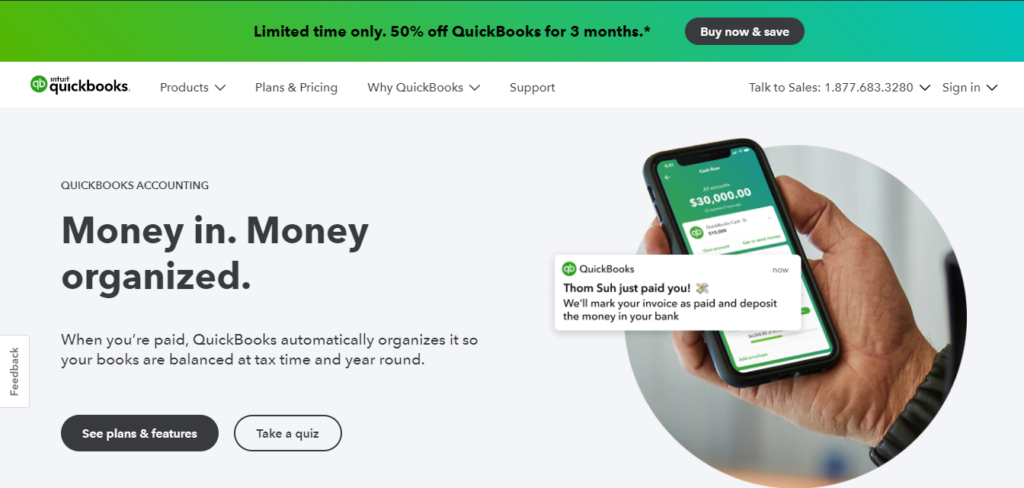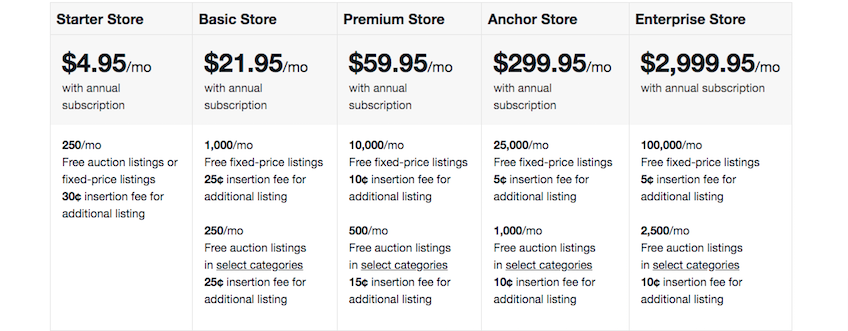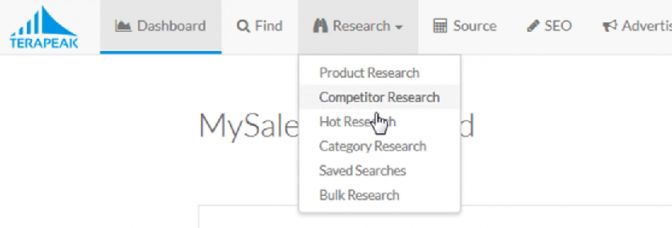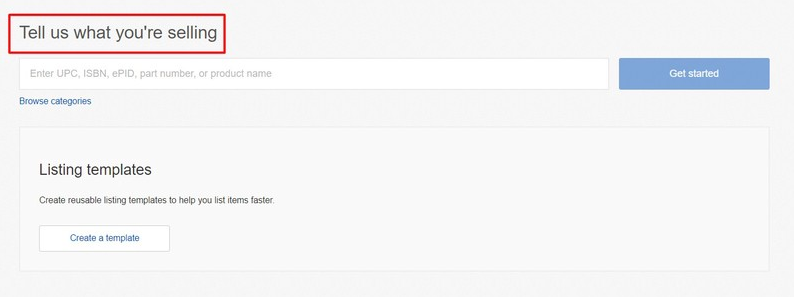You might find eBay to be the platform of choice if you’re looking to start a business with minimal capital and a broad reach. This online marketplace has low barriers to entry and the potential to reward successful entrepreneurs with good profit for a low-risk business.
5 Steps to Start an eBay Business
Ready to start selling on eBay? Just follow these simple steps:
- Create a formal business
- Create your eBay seller account
- Choose a product to sell
- Set up your accounting with QuickBooks
- Get ready to sell your first product
The Easy Parts of Starting an eBay Business
The barriers to entry in entrepreneurship have never been lower. Setting up your eBay account only takes a few minutes. You simply need to enter your details, complete a few steps, and you’re ready to sell.
Your eBay account comes with a storefront, so you don’t even need a separate business website to sell your products online.
eBay seller accounts also come with valuable tools to make it easier for novices to compete with more seasoned sellers. For example, eBay has exclusive insights tools called Terapeak Product Research and Terapeak Sourcing Insights.
You can use it to find popular products that sell well on eBay. You can also use it to analyze product availability, sales volumes, and pricing trends over time. In short, you’ll be able to make data-driven decisions without complicated and time-consuming market research.

Finally, keeping track of your accounting can seem daunting if you’re starting a business for the first time. But QuickBooks can help make the process much easier.
The best part is it integrates natively with eBay. Using QuickBooks to manage accounting for your eBay business allows you to:
- Monitor your inventory
- Track sales tax
- Analyze sales reports
- Generate federal reporting forms for payroll

The Difficult Parts of Starting an eBay Business
Unfortunately, some aspects of starting an eBay may prove challenging. Still, it is possible to overcome these hurdles and create a successful business. Anticipating these challenges beforehand will increase your chances of success.
The first obvious hurdle is high competition. eBay is saturated with vendors. Many of these vendors most likely already sell the kinds of products you hope to stock. So you’ll have your work cut out for you attracting a steady stream of customers.
This is especially true in the beginning when you don’t have customer feedback to boost your credibility.
eBay also imposes selling limits for new vendors. These limits make sense from eBay’s perspective. New sellers need to build credibility by providing high-quality products and maintaining high service levels.
But the limitations can make it challenging to be profitable right out of the gate. Furthermore, this limit is based on potential sales rather than actual sales, which many new vendors find arbitrary.

An eBay business is still worth starting, even with these challenges. So if you’re ready to set up your business, here’s how to go about it step-by-step.
Step 1 – Create a Formal Business
You’ll need to register your business if you want to create an eBay business account. If you haven’t already, get the formal requirements to register your business out of the way. The IRS still considers eBay a business, and you’ll need to meet the requirements as a business.
Choose a Business Structure
A Limited Liability Company (LLC) is the best business structure for an eBay business. In addition, you will be eligible for limited liability protection. This means that the courts can’t come for your personal finances or assets if your business fails or is sued.
Some of the requirements for forming an LLC include:
- Business name
- Article of organization
- Operating agreement
- Business licenses and permit
- Tax forms
There are excellent online business formation services you can use to help form your LLC. These services take charge of all the challenging aspects of forming your LLC, including filing the appropriate paperwork.
Register for Taxes
Once you have an official LLC, apply for an Employer Identification Number (EIN). You can get your EIN for free by submitting your application to the IRS website. You need an EIN to open a business bank account and when hiring employees.
You’ll be reporting your business income on your personal tax return. You may also need to pay self-employment taxes. Any other taxes you need to pay depends on your total sales and profit.
Step 2 – Create Your eBay Seller Account
Now you’ll create your eBay seller account. The account comes with valuable tools for market and product research that you’ll need in the next step. Also, you have a chance to get familiar with the platform before you start selling.
Choose Your Plan
eBay offers a personal account for casual selling. But if you’re hoping to run a business, it is better to go with the business account from the start. The business account supports selling bulk products.
You also get the chance to run your business under its legal name and brand it to your liking. The personal account is limited mainly to selling things you no longer need.
eBay offers five subscription options:
- Starter Store – Costs $4.95 per month
- Basic Store – Costs $21.95 per month
- Premium Store – Costs $59.95 per month
- Anchor Store – Costs $299.95 per month
- Enterprise Store – Costs $2,999.95 per month

We recommend getting started with the basic plan. It’s affordable and a good option for entry-level sellers. Then, you can easily upgrade to a plan with higher sales volumes when your business takes off.
Register Your eBay Account
Now it’s time to create your eBay store. The process is straightforward. Just follow the prompts and provide the required information. It only takes a few minutes to complete the registration process.
Some of the information you’ll need to provide include:
- Your company’s legal business name
- The registered business address and phone number
- Business bank account number
- Tax information
Step 3 – Choose a Product To Sell
You’ll first need to decide which product to sell. Remember, eBay has selling limits for new sellers. So you’ll need to pick your products carefully to maximize your chances of success.
Do Product Research
eBay’s product research tool, Terapeak, will prove invaluable for this step. You get this tool with all plans, including the basic seller account. You can find it under the Research tab in your Seller Account.
You’ll get all the insights you need to pick your first product. Be sure to check out metrics such as categories with high demand and low supply, top-performing products, competitive listings, and trends in prices.

Some of the essential metrics you’ll be able to track for your first product include:
- Total sales
- Total sellers
- Sell-through rate
- Total sold
- Sold price range
- Average sold price
Choose Your Products
By now, you should have a list of potentially profitable products. Price is an important consideration at this point. You’ll lose some of the retail prices because of eBay and payment processing fees. So, choose a product that gives you an excellent chance to make a profit.
It is usually worth choosing at least two different types of products to sell. More than the price, choose products that you are familiar with and passionate about. It’s hard to market a product you don’t believe in.
Finally, it may be worth staying away from electronics. At least for now. Electronics have high demand and good profit potential. But you’ll almost certainly get returns and complaints about faulty products. So it is better to get some experience under your belt before moving on to these products.
Step 4 – Set Up Your Accounting With QuickBooks
You’ll need to pay taxes for your eBay business. At the very least, you’ll need to keep track of your profits, losses, and cash flow. Setting up accounts for your first business can be daunting.
But QuickBooks is an easy-to-use accounting software to help you with this step. It makes the process so much easier and stress-free.
Choose Your QuickBooks Plan
You can go to their site to choose your QuickBooks plan and sign up for the accounting software. QuickBooks offers four subscription options. These include:

The Simple Start plan is good enough for newbie eBay sellers. It comes with great accounting functions, including:
- Track income and expenses
- Accept payments
- Manage invoices
- Capture and organize receipts
- Send estimates
- Manage cash flow
- Run general reports
Sign Up For QuickBooks Ecommerce
Your basic plan is good enough. But you can make accounting even simpler by signing up for QuickBooks Ecommerce. QuickBooks has an accounting software plans specifically for ecommerce sellers. Plans begin at just $15 per month. You’ll be able to:
- Track and fulfill eBay orders
- Track eBay fees and payouts
- Manage eBay inventory
- List product details directly to eBay
You still get the major accounting features that QuickBooks online offers, including:
- Tracking income and expenses
- Maximizing tax deductions
- Calculating tax on invoices automatically
- Running custom reports for your eBay business

Plus, you’ll be getting 50% off for the first three months. Then, you can decide if you want to continue to pay for the current monthly price depending on the results and benefits you’ve enjoyed.
While QuickBooks Ecommerce comes with the Simple Start plan, you’ll need to upgrade to the Essentials plan to enjoy additional accounting functions like time tracking and managing bills. You’ll even be able to add two more users and sales channels to your accounting software with this plan.
Connect QuickBooks to Your eBay Account
eBay connects natively to QuickBooks Ecommerce. You can do this from your QuickBooks navigation bar. Simply click Browse Apps > eCommerce > eBay built by QuickBooks Ecommerce.
The best part is QuickBooks Ecommerce allows you to sync orders, inventory, vendor information, expenses, employee information, and customer information across sales channels. In addition, you’ll get all this information on a single platform, allowing you to manage multiple sales channels easily.
Step 5 – Get Ready to Sell Your First Product
You’re almost ready to make your first sale. But, you’ll need to complete setting up your eBay account before you can make your first sale.
Add a Payment Method
Your payment method is essential for two reasons. First, you’ll need a way to receive payment from your customers. Second, you’ll also need to pay your eBay fees. You can set up your preferred payment method by navigating to My eBay > Selling > Accounts > Payments.
We suggest opting for eBay’s Managed Payments. Here, eBay manages your payments in one place. This option also allows you to set your preferred payouts frequency. Managed Payments also offers your customers a good range of payment options, so you don’t miss out on a sale.
It is also a good idea to set up automatic payments for your seller fees. This option ensures that you’re always on top of the fees rather than allowing them to pile up.

Set Up Shipping
eBay allows you to choose how you’d like to get purchases to your customers. You’ll want to offer multiple shipping options to cover all your bases. Either way, you have total freedom to determine how to ship products.
You can even choose to exclude specific countries, regions, and shipping locations.
eBay integrates with the most popular and trustworthy carriers, including FedEx, USPS, UPS, DHL, Lasership, and Lonestar Overnight. Finally, you’ll want to offer your customers regular shipping updates or a way to track their shipments.
Don’t forget about handling returns. This factor is a common pain point for sellers and customers. To this end, eBay lets you create a returns policy under Returns Preferences.
For example, you can choose to automatically refund clients in case of a dispute. You can also let them keep the item if it’s below a certain amount.
Create Your First Listing
You are ready to make your first sale! You’ll see the Sell button at the top of the eBay page.
Click it and complete the form with the relevant product information. Some of the information you’ll be asked to provide includes the product category, product title and description, item specifics, product pictures, price, and listing format.

You’re now ready to sell your products and make money!
